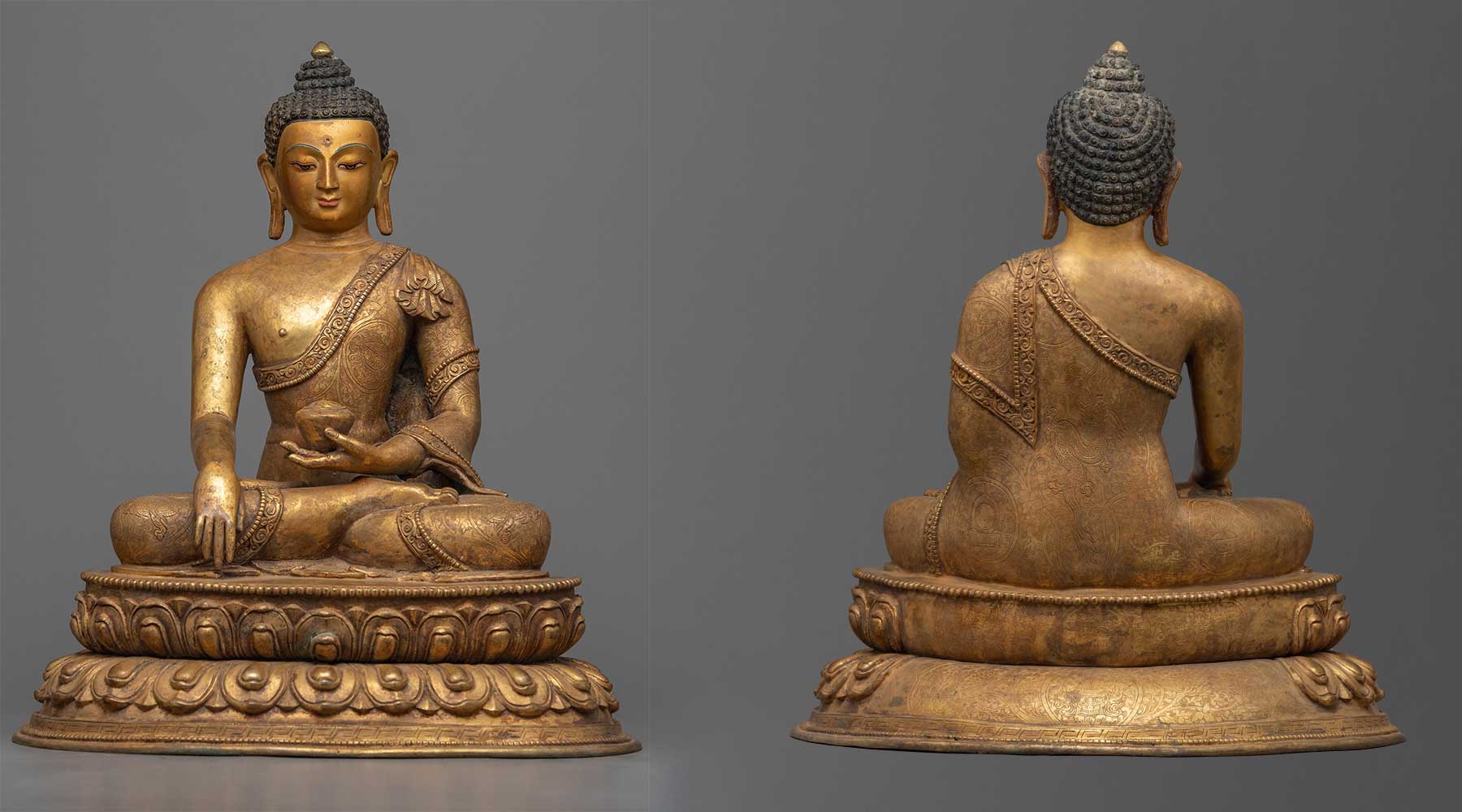A Journey to Inner Harmony Four Noble Truths and Eightfold Path
Buddhism originated with Gautama Buddha, born as Siddhartha Gautama, in Nepal, and later spread globally. 'Buddha' signifies 'the awakened' or 'the wise one,' closely linked to 'Buddhi' which means intellect and wisdom. This title is granted to those who achieve enlightenment or Nirvana.
The essence of Buddhism lies in freeing the soul from the world's suffering (dukkha). Fundamentally, Buddhism offers a path to comprehend life deeply and escape suffering, accessible to all. This journey is briefly outlined in the Four Noble Truths of Buddha (Pāli: cattāri ariyasaccāni), revealing human existence's realities and the ultimate route to alleviate suffering.
The Four Noble Truths In Buddhism
The Four Noble Truths are at the core of Buddhist philosophy, which serves as a comprehensive structure for comprehending the essence of suffering and its transcendence. They are labeled as "Noble Truths" due to their inherent truthfulness (tathni), accuracy (avitathni), and unwavering nature (anaathni).
-
The Truth Of Suffering (Dukkha)
Suffering, or dukkha, is an integral facet of existence – the initial truth accentuates its presence. It encompasses emotional and existential distress stemming from life's impermanence, generating a sense of dissatisfaction.
Whether manifesting physically or emotionally, suffering is an inherent and widespread reality. Yet, grasping this verity isn't linear; it demands a layered comprehension of suffering's essence. Only upon acknowledging and embracing the fact that one's nature incorporates suffering can the journey to surmounting it commence. -
The Cause of Suffering (Samudāya)
The second truth elucidates the origin of suffering. It stems from our attachment to earthly elements and worldly desires, whether they manifest as material possessions or ideological pursuits.
These cravings and fixations catalyze suffering, initiating its cycle. Any attachment inherently brings about suffering when it's lost or fails to meet our expectations. The perpetual pursuit of pleasure and gratification intensifies our agony, perpetuating the cycle. Recognizing and comprehending this suffering marks the initial stride towards conquering it. -
Freedom From Cause Of Suffering (Nirodha)
The third truth underscores the path to freedom. Detaching oneself from attachment emerges as the sole means to cease desires, the source of dukkha.
This potential for emancipation from suffering constitutes the third Noble Truth. We can relinquish attachment and cravings through nurturing mindfulness and compassion, breaking free from suffering's grip, and terminating the existence cycle. This pursuit doesn't advocate apathy or indifference but encourages a quest for profound and purposeful contentment. -
The Truth of Path of Liberation From Suffering
The fourth Noble Truth introduces actionable strategies and remedies for effectively ending suffering and affliction. The Buddha imparted wisdom on the roots of suffering, rooted in ignorance, concerning three fundamental aspects of conscious existence: suffering, impermanence, and non-self.
This lack of awareness gives rise to attachments, encompassing desires, and aversions, further entrenching ignorance about the genuine nature of conscious existence. This perpetuates the cycle of rebirth, aging, illness, and death.
The antidote for such ignorance encompasses a series of principles known as the Eightfold Path, also denoted as the Middle Way. This path avoids the extremes of excessive indulgence and extreme asceticism, both of which failed to guide the Buddha toward enlightenment.
The Eightfold Path Of Buddha

Click here to view our Shakyamuni Buddha Statue
The Noble Eightfold Path is a foundational tenet in Buddhism, serving as the focal point of the Buddha's teachings in various incarnations. Comprising eight interwoven principles, these paths diverge from numerical conventions, converging instead towards the ultimate goal of liberation from suffering.
This framework is a pragmatic compass for those embarking on a journey toward spiritual illumination and inner serenity. It can be perceived as the tangible embodiment of Buddhist teachings put into practice. The Buddha himself elucidated these eight paths tailored to the listener's capacity for comprehension, as they offer a set of guidelines that seamlessly integrate profound philosophical and spiritual aspects into everyday life.
-
Right Understanding
Foster a profound grasp of the Four Noble Truths and the essence of reality, constituting the bedrock of Buddhist philosophy. One can transcend the cycle of rebirth and achieve liberation by understanding the nature of suffering, its origins, and the route to its cessation. -
Right Intention
Cultivate virtuous and wholesome intentions harmonious with the journey to enlightenment. This involves nurturing sentiments of compassion, loving-kindness, and the resolve to relinquish harmful conduct. Striving for profound insight and wisdom is a key aspiration. -
Right Speech
Refrain from falsehood, gossip, hurtful language, and divisive communication. Instead, embrace truthful, compassionate, and skillful discourse that fosters unity and comprehension. -
Right Action
Embrace ethical conduct while avoiding harmful behaviors such as killing, stealing, and engaging in improper sexual conduct. Cultivate actions that nurture peace, compassion, and overall well-being. -
Right Livelihood
Seek a livelihood that upholds ethics, aligns with Buddhist principles, and resonates with personal spiritual values. Reject occupations that harm fellow sentient beings and opt for roles that enhance societal well-being and contribute positively. -
Right Effort
Dedicate oneself to cultivating positive qualities while steadily working to overcome negative aspects. This perseverance sustains spiritual growth amidst obstacles and challenges on the path to enlightenment. -
Right Mindfulness
Foster mindfulness and present-moment awareness, abstaining from judgmental focus and negative emotions. This mindfulness is essential for emotional, physical, and mental practice, leading to profound insights into the fabric of reality. -
Right Concentration
The concluding practice on the Noble Eightfold Path involves nurturing profound concentration through meditation and related methods. This cultivates insight into the nature of reality and the intricate workings of the mind.
Within Tibetan Buddhism, the Eightfold Path and the Four Noble Truths are of utmost importance. These teachings capture the essence of life and offer a path to enlightenment and release.
The fact of suffering, its cause, its cessation, and the way to its end are all addressed in the Four Noble Truths. These facts provide a thorough insight into the human predicament in Tibetan Buddhism and direct practitioners toward transcending suffering.
A similar ethical and balanced method of life is described by the Eightfold Path, which includes right understanding, intention, speech, action, livelihood, endeavor, and mindfulness. This route is a comprehensive method for achieving enlightenment and developing moral characteristics in Tibetan Buddhism. The Four Noble Truths and the Eightfold Path function harmoniously to provide Tibetan Buddhists with a framework leading them to profound realizations and spiritual liberation.















